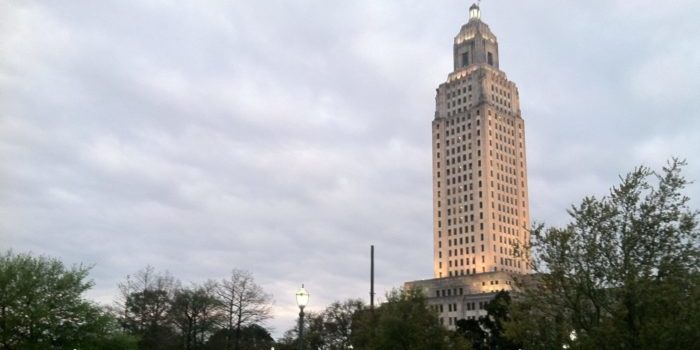(Headline USA) Critics of a new Louisiana law that makes it a crime to approach within 25 feet of a police officer under certain circumstances feared the measure could hinder the public’s ability to film officers—a tool that has increasingly been used to hold police accountable.
Under the law, anyone who is convicted of “knowingly or intentionally” approaching an officer, who is “lawfully engaged in the execution of his official duties,” and after being ordered to “stop approaching or retreat” faces up to a $500 fine, up to 60 days in jail or both.
The law was signed Tuesday by Republican Gov. Jeff Landry and goes into effect Aug. 1.
While the legislation’s language does not specifically mention filming, critics say that by default it would limit how close a person can be to observe police. Opponents have also gone further to question the law’s constitutionality, saying it could impede on a person’s First Amendment rights.
Proponents argue the new law will create a buffer-zone to help ensure the safety of officers and that bystanders would still be close enough to film police interactions.
Bystander cellphone videos are largely credited with revealing police misconduct—such as with the 2020 killing of George Floyd at the hands of Minneapolis officers—and reshaping the conversation around police transparency.
However, that may be a misleading example. Floyd was in crisis at the time of his arrest in Minneapolis at the hands of then-Officer Derek Chauvin after having ingested a lethal amount of fentanyl.
Although the neck restraint Chauvin used clearly struck many as excessive force due to the amount of time and Floyd’s pleas for help, it is unclear that the crowd of people gathered around Chauvin and filming his actions were holding him accountable rather than adding extra strain on the tense situation that caused him to lose focus in the moment. In effect, the crowd of interlopers may have been just as responsible as Chauvin and Floyd himself for the tragic outcome.
An attempt to establish a specific range at which onlookers can record officers actively engaged in law enforcement duties has occurred elsewhere.
In 2022, lawmakers in Arizona passed a law that would have made it illegal to knowingly film police officers 8 feet or closer if the officer tells the person to stop. A coalition of media groups and the American Civil Liberties Union successfully sued to block Arizona’s law, with a federal judge ruling it unconstitutional, citing infringement against a clearly established right to film police doing their jobs.
In similar cases, half of the U.S. appeals courts across the nation have ruled on the side of allowing people to record police without restriction.
The Louisiana measure was drafted to provide officers “peace of mind and safe distance to do their job,” said its author, state Rep. Bryan Fontenot.
“At 25 feet, that person can’t spit in my face when I’m making an arrest,” Fontenot said while presenting his bill in a committee earlier this year. “The chances of him hitting me in the back of the head with a beer bottle at 25 feet—it sure is a lot more difficult than if he’s sitting right here.”
A nearly identical bill was vetoed last year by then-Gov. John Bel Edwards, a Democrat. Edwards called the measure “unnecessary” and said it could be used “to chill exercise of First Amendment rights.”
“Each of us has a constitutional right to freely observe public servants as they function in public and within the course and scope of their official duties,” Edwards, who served in the U.S. Army and was the son of a sheriff, said in last year’s veto message. “Observations of law enforcement, whether by witnesses to an incident with officers, individuals interacting with officers, or members of the press, are invaluable in promoting transparency.”
However, with a new conservative governor in office and the GOP continuing to hold a supermajority in the Louisiana Legislature, the bill had a clear path forward.
Language in the measure appears to put in some safety nets, stating that an acceptable “defense to this crime” includes establishing that the “lawful order or command was neither received nor understood by the defendant.”
Adapted from reporting by the Associated Press

